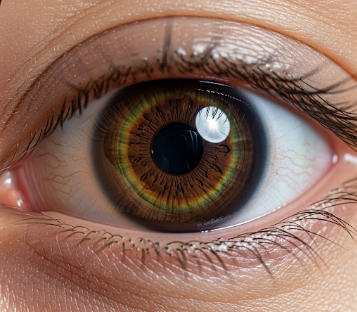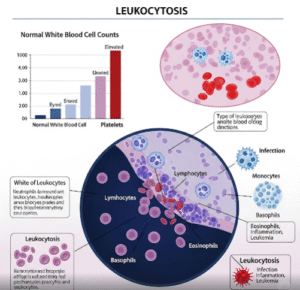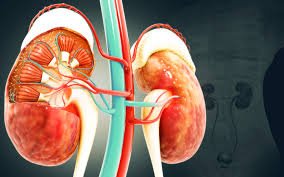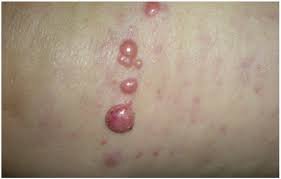Overview
Kayser-Fleischer (KF) rings are golden-brown or greenish-brown rings around the cornea of the eye, visible at the junction of the cornea and sclera (the limbus). These rings result from copper deposition in Descemet’s membrane and are a hallmark sign of Wilson’s disease, a rare genetic disorder affecting copper metabolism.
In Korea, ophthalmology and hepatology clinics provide advanced diagnostic tools to detect KF rings, assess liver function, and manage Wilson’s disease. Early recognition of these rings can lead to timely treatment, preventing serious complications such as liver failure or neurological damage.
Key Facts
- ➔ KF rings are a key clinical indicator of Wilson’s disease.
- ➔ They appear due to copper accumulation in the cornea.
- ➔ Not all patients with Wilson’s disease have visible rings, but their presence strongly supports the diagnosis.
- ➔ KF rings are typically detected using a slit-lamp eye examination.
- ➔ Early detection and treatment of Wilson’s disease can prevent liver and neurological damage.
What are Kayser-Fleischer Rings?
Kayser-Fleischer rings are pigmented rings at the periphery of the cornea caused by copper buildup.
- ➔ Location: They occur at Descemet’s membrane, which lies just under the corneal endothelium.
- ➔ Appearance: Golden-brown, greenish, or bronze-colored rings encircling the cornea.
- ➔ Significance: Presence of KF rings is highly suggestive of Wilson’s disease, though they may also be present in other copper metabolism disorders.
- ➔ Detection: Often invisible to the naked eye but can be identified with slit-lamp examination by an ophthalmologist.
KF rings are a visible biomarker of systemic copper accumulation, alerting clinicians to possible liver or neurological involvement.
What Symptoms Are Related To
While KF rings themselves do not cause vision problems, they are often accompanied by systemic symptoms related to Wilson’s disease:
- ➔ Fatigue and weakness
- ➔ Abdominal pain or swelling due to liver involvement
- ➔ Jaundice (yellowing of the skin and eyes)
- ➔ Tremors, difficulty speaking, or movement disorders
- ➔ Psychiatric symptoms such as depression, irritability, or personality changes
- ➔ Difficulty walking or coordination issues
- ➔ Swelling of legs or fluid retention
Detection of KF rings can precede or coincide with these systemic manifestations, providing a critical clue for early intervention.
What Causes / Possible Causes
Kayser-Fleischer rings arise from copper accumulation due to impaired copper metabolism:
- ➔ Wilson’s disease: Genetic mutation in the ATP7B gene prevents proper copper excretion via bile.
- ➔ Excess copper accumulation: Copper deposits in the liver, brain, and cornea, leading to hepatic and neurological symptoms.
- ➔ Other rare disorders: Some copper storage or metabolic disorders may also cause corneal copper deposition.
The underlying cause is typically genetic, and early diagnosis is crucial to prevent irreversible organ damage.
When Should I See My Doctor
Seek medical attention if you notice:
- ➔ Yellowing of the eyes or skin (jaundice)
- ➔ Unexplained tremors, speech difficulties, or movement problems
- ➔ Psychiatric or cognitive changes
- ➔ Fatigue or abdominal swelling
- ➔ A family history of Wilson’s disease or early liver/neurological disorders
Early evaluation by an ophthalmologist and hepatologist can identify KF rings and initiate treatment before severe organ damage occurs.
Care and Treatment
Management of Kayser-Fleischer rings focuses on treating the underlying Wilson’s disease:
- ➔ Chelation therapy: Medications such as penicillamine or trientine bind excess copper, allowing its excretion.
- ➔ Zinc therapy: Blocks copper absorption in the intestines and helps prevent further accumulation.
- ➔ Dietary modifications: Limiting copper-rich foods such as shellfish, nuts, chocolate, and organ meats.
- ➔ Liver monitoring: Regular evaluation of liver function and imaging to track disease progression.
- ➔ Neurological and psychiatric care: Symptom management with supportive therapy or medications.
- ➔ Liver transplantation: In cases of severe liver failure, transplantation may be required.
With timely treatment, KF rings may fade over time, and systemic symptoms can be controlled effectively.
Treatment Options in Korea
Korean hepatology and ophthalmology centers provide comprehensive care for patients with Kayser-Fleischer rings and Wilson’s disease:
- ➔ Ophthalmology assessment: Slit-lamp examination for detection and monitoring of KF rings.
- ➔ Hepatic evaluation: Blood tests, liver function tests, imaging, and sometimes liver biopsy.
- ➔ Genetic testing: Identifying ATP7B mutations to confirm Wilson’s disease.
- ➔ Medication therapy: Chelators (penicillamine, trientine) and zinc therapy administered under specialist supervision.
- ➔ Multidisciplinary care: Coordination between ophthalmologists, hepatologists, neurologists, and dietitians for optimal outcomes.
- ➔ Advanced treatment: Liver transplantation for severe hepatic failure, performed in leading hospitals such as Seoul National University Hospital, Asan Medical Center, and Samsung Medical Center.
Korean medical centers provide state-of-the-art diagnostics and personalized treatment plans, ensuring early intervention and improved prognosis.
In Summary: Kayser-Fleischer rings are a visible marker of systemic copper accumulation, most commonly due to Wilson’s disease. Early detection, accurate diagnosis, and advanced treatment in Korea can prevent liver and neurological complications, improve quality of life, and in some cases, reverse the corneal rings.
- ➔ Key Takeaway: KF rings are an important diagnostic sign and should prompt evaluation for Wilson’s disease.
- ➔ Action Point: Consult an ophthalmologist and hepatologist for comprehensive assessment and treatment.













